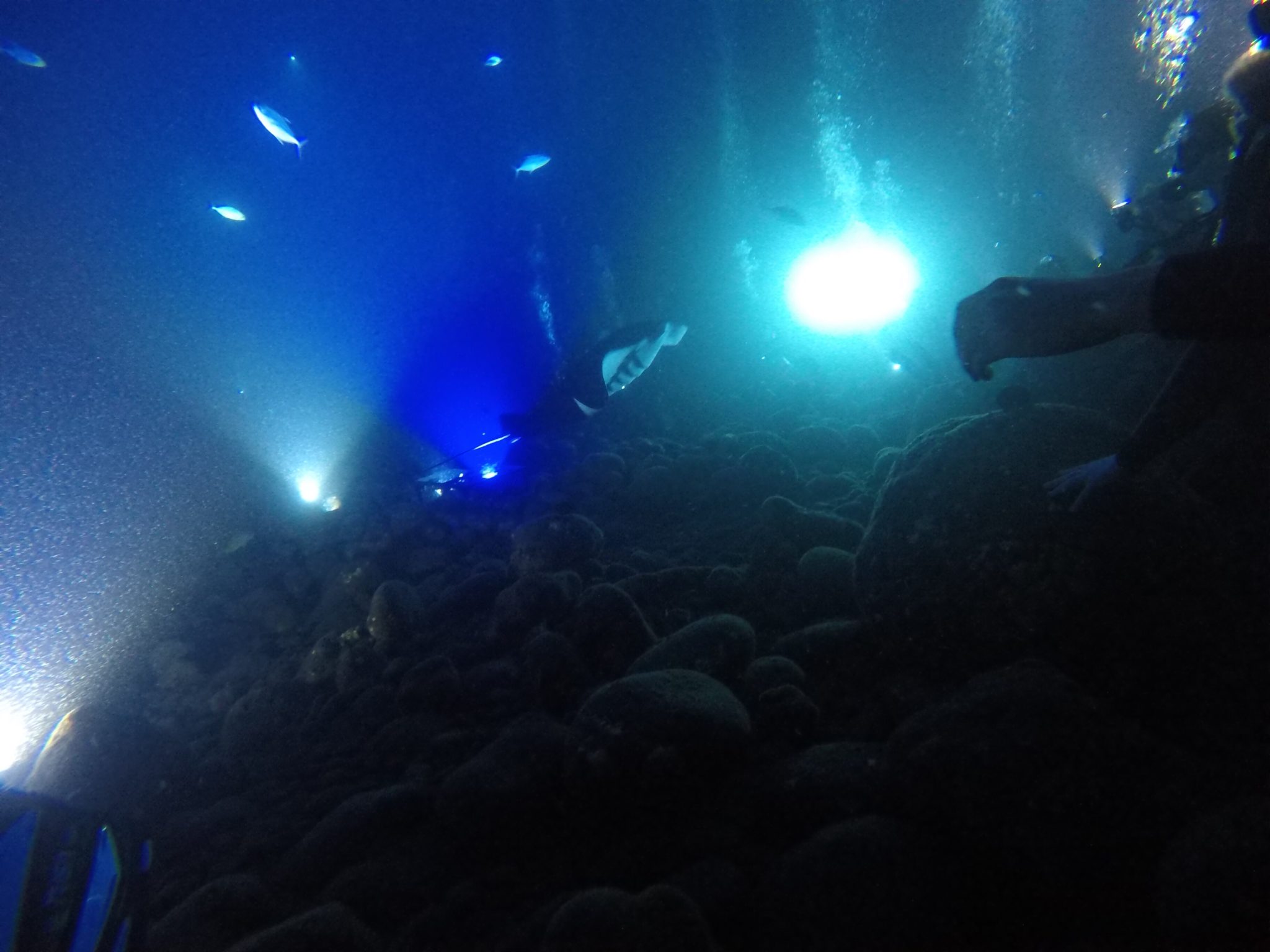Yesterday we followed a pod of Pilot Whales, snorkeled in a cool reef, and dove with Manta Rays. When we were on the Zodiac Boat, we saw a pod of Short-Finned Pilot Whales that had a newborn baby. We could tell it was a baby because because his dorsal fin was flopped over on its side, and it normally takes around 48-72 hours to for a newborns cartilage to fully harden. The pilot whales were at the surface logging. When they log, they come to the surface to replenish their oxygen source, because they are mammals and they can’t breath underwater. We later went to the snorkeling site, which was off the side of a large cliff. We explored the reef for a long time and I saw many cool species of fish. I saw a spiny Porcupine Fish, a Bluefin Cravalle, and some very large schools of fish. We dove down deep holding our breath to try to get closer to some of the reefs. Even when it looked like there weren’t many fish around, if you focused on one section of the reef you could see dozens of fish swimming in the coral, like a juvenile Cleaner Wrasse. At the Manta dive, we first dive in the afternoon to get a feel for the reef. I saw a few eels and a cool jellyfish called a Crown Jelly. When we started the Manta Dive, we dove down at night time to a location where there were big lights shining up to the surface. All the divers sat around the circle like a campfire and we used big rocks to help us from moving around. The lights they placed down are used to trick the phytoplankton into thinking it is daytime, because phytoplankton are attracted to the light. When the phytoplankton swarm around the lights, large Manta Rays that can be anywhere from 4-16 feet on average come to feed on the phytoplankton. The Manta Rays do massive backflips over the phytoplankton with their mouths open because they are able to get more food in a faster time. One of the Mantas did backflips occasionally, but the other Manta that was there did not know how to do backflips yet. I am most excited about the black water dive. We get to go in pitch black water at night and see organisms that are migrating to the surface that normally are never seen in the day. Some organisms go to the surface to breath, others go to respirate. I’m excited to see the organisms that use bioluminescence (light up certain parts of their body) because they will be floating around in front of me.
Link to more info on Manta Rays: https://www.mantaray-world.com/manta-ray-feeding/



